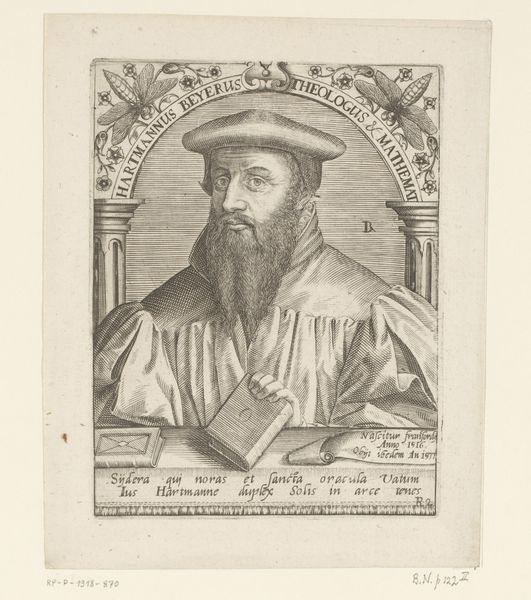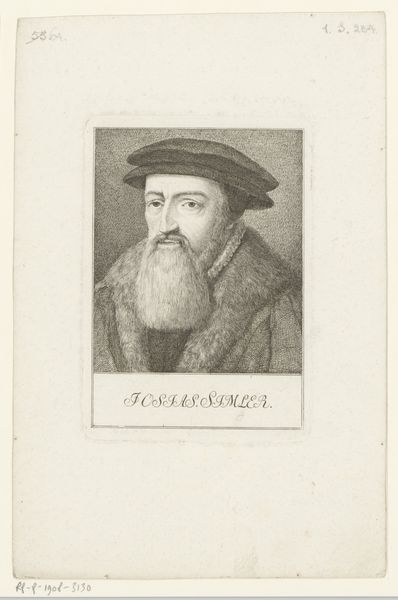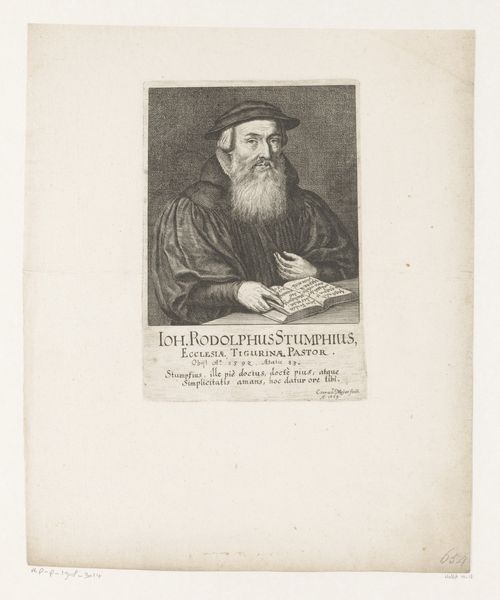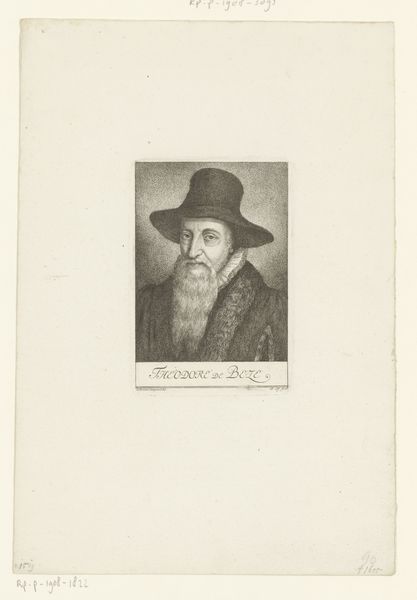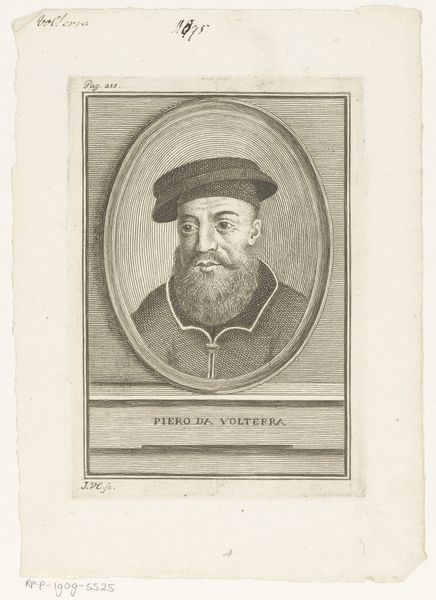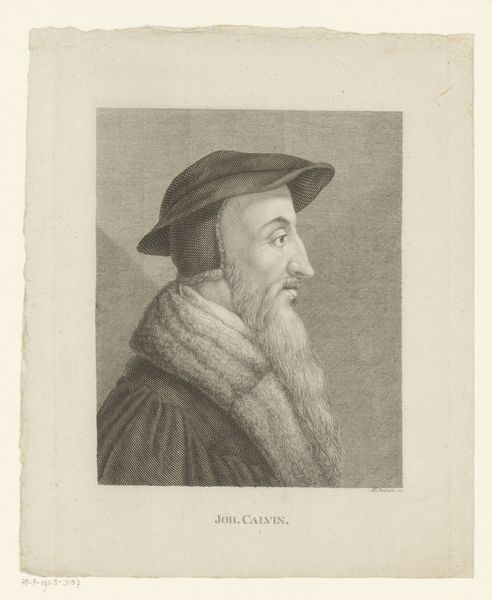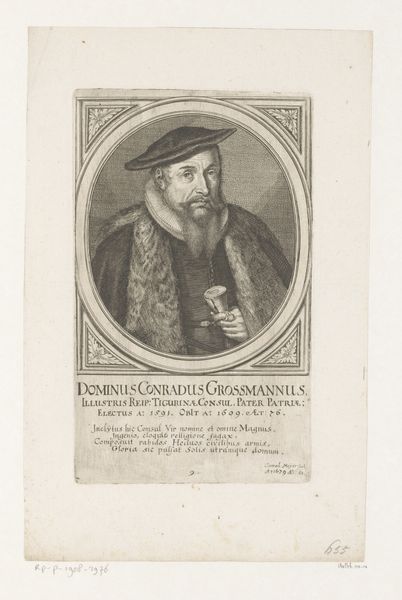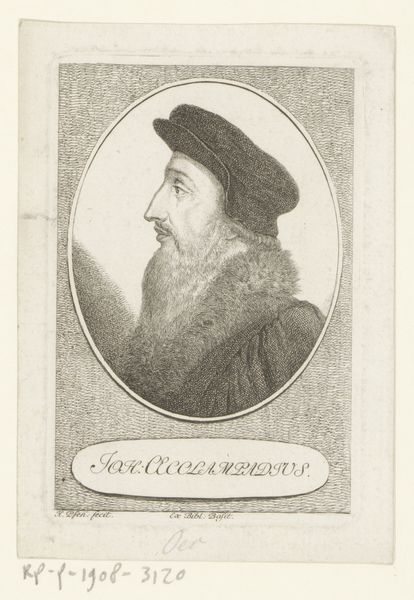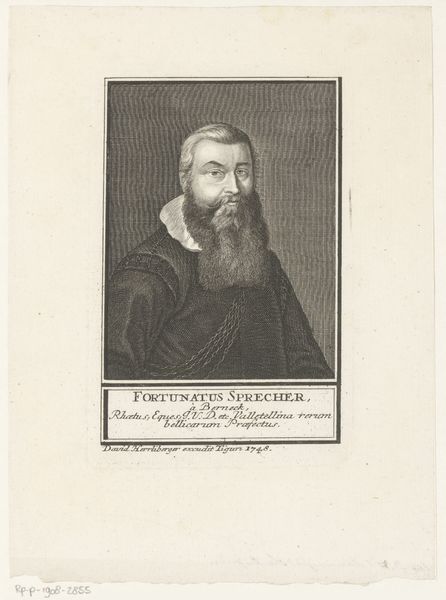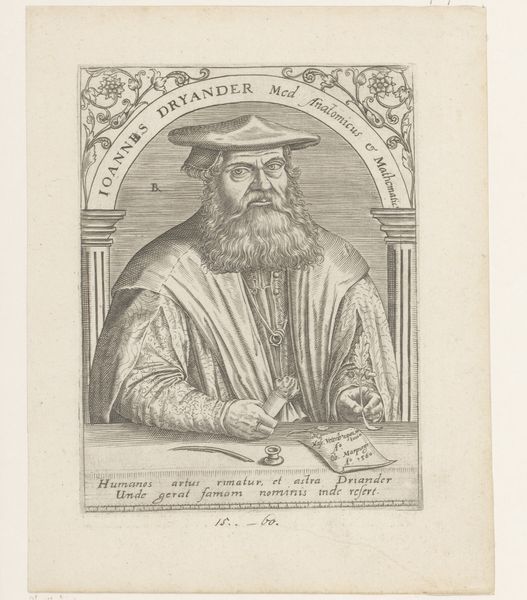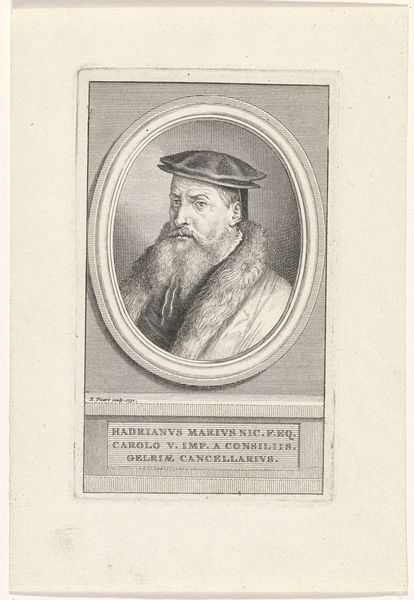
engraving
#
portrait
#
11_renaissance
#
history-painting
#
engraving
Dimensions: height 128 mm, width 85 mm
Copyright: Rijks Museum: Open Domain
Heinrich Pfenninger created this portrait of Celio Secundo Curione using the technique of etching, a printmaking process which relies on acid to 'bite' into a metal plate, leaving behind an image when inked and printed. Look closely, and you’ll notice the subtle tonal gradations that give the portrait its depth. This effect is achieved through the control of the etching process, the time during which the plate is exposed to the mordant. The skill of the printmaker, combined with their ability to coax subtle variations from the material, all contribute to the final aesthetic. As a reproductive medium, etching played a crucial role in circulating images and ideas across Europe, enabling a wider audience to access art and knowledge. Beyond its function, this print serves as a reminder of the labour and technical expertise involved in creating even seemingly simple images. Appreciating the material and processes behind this work challenges traditional ideas about artistic skill and value.
Comments
No comments
Be the first to comment and join the conversation on the ultimate creative platform.

